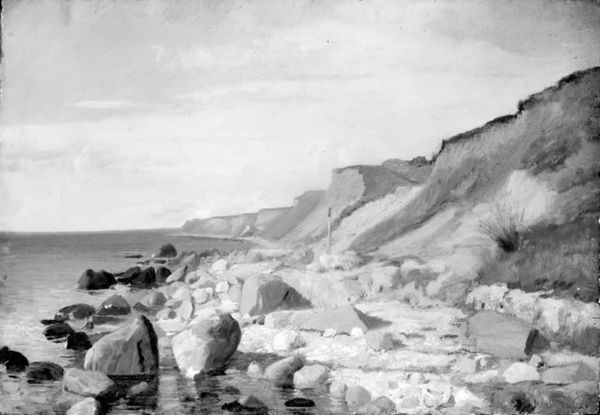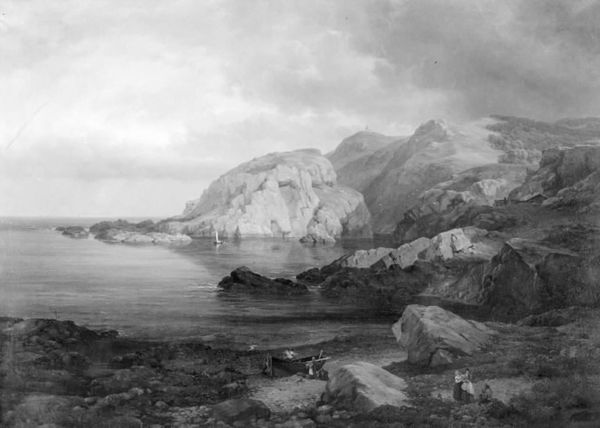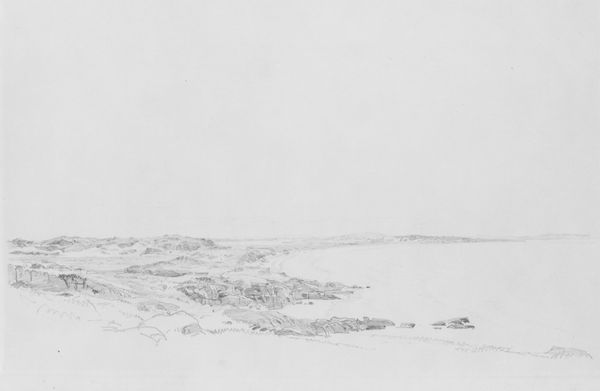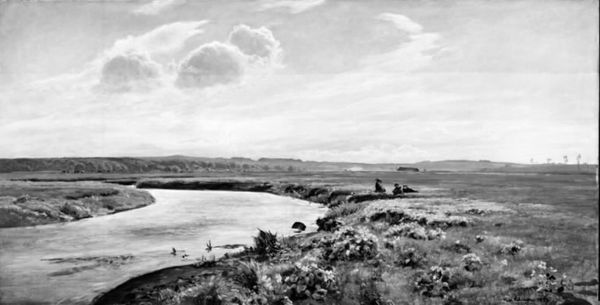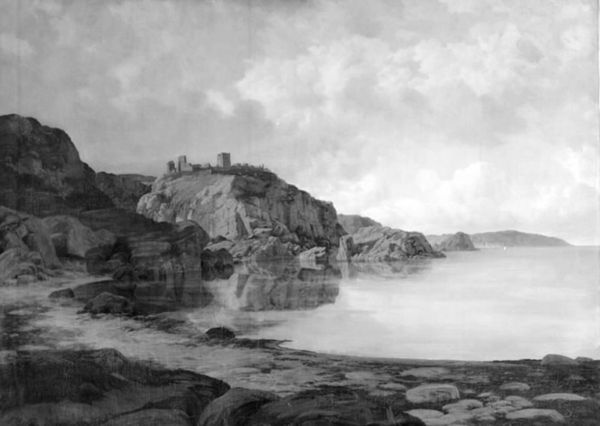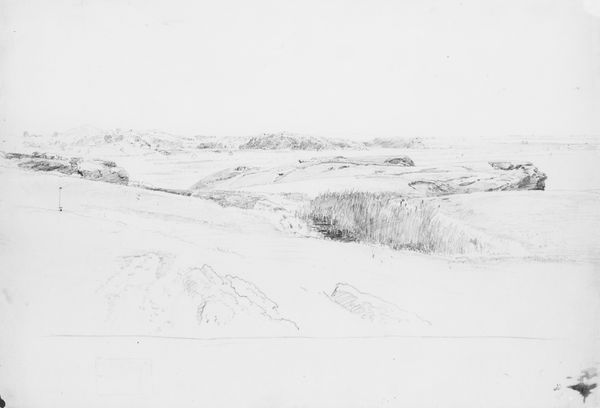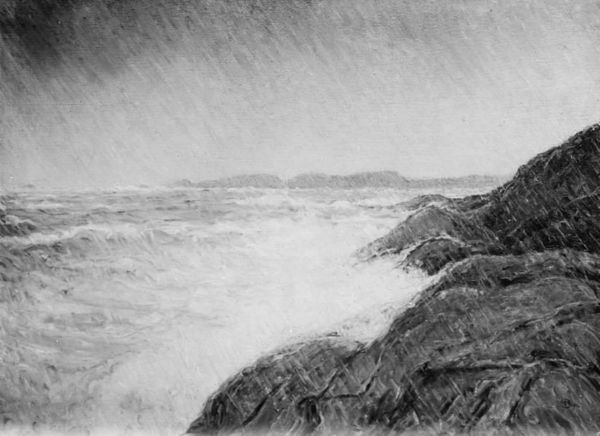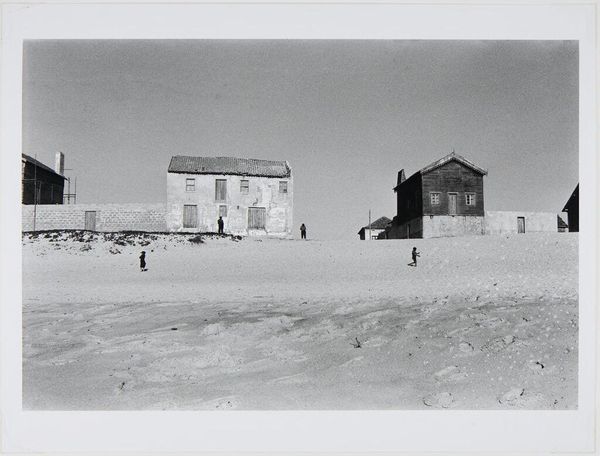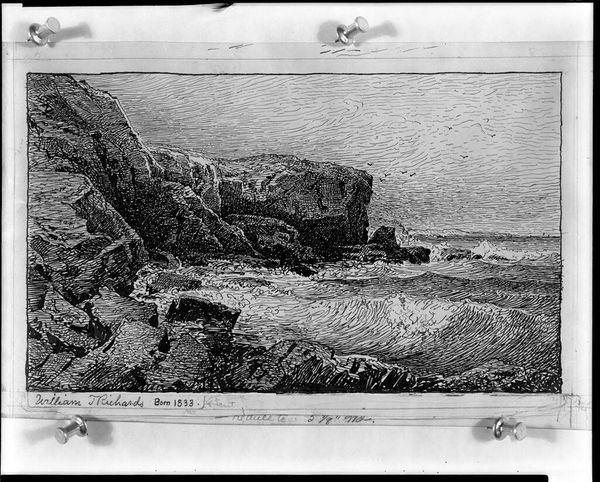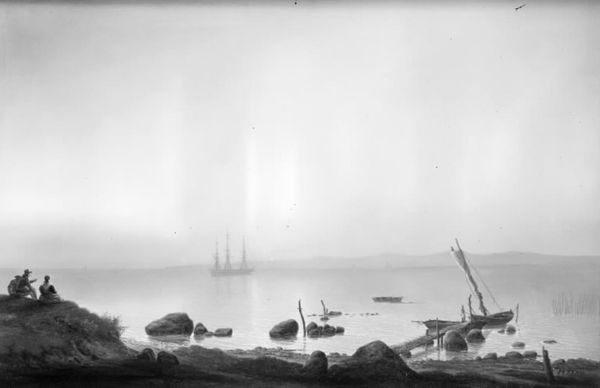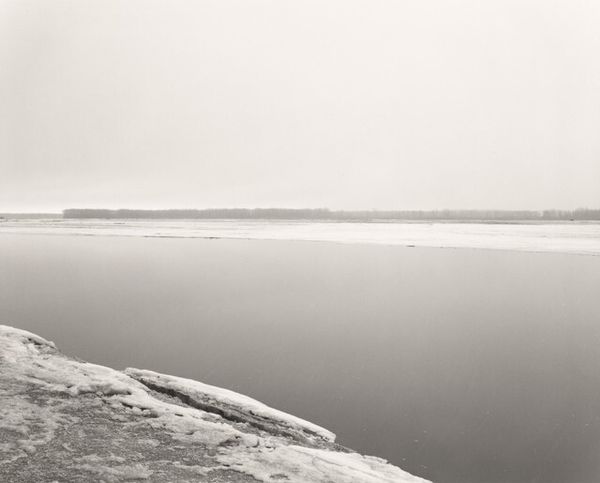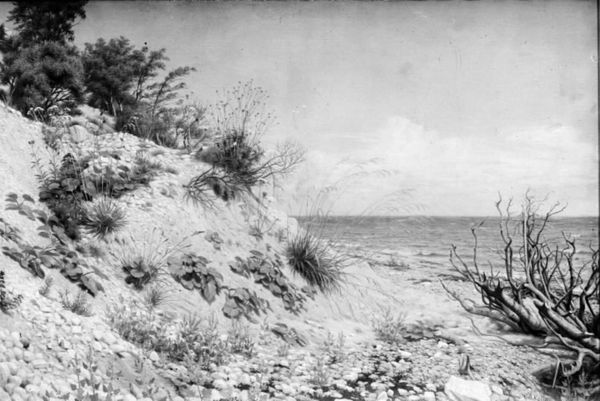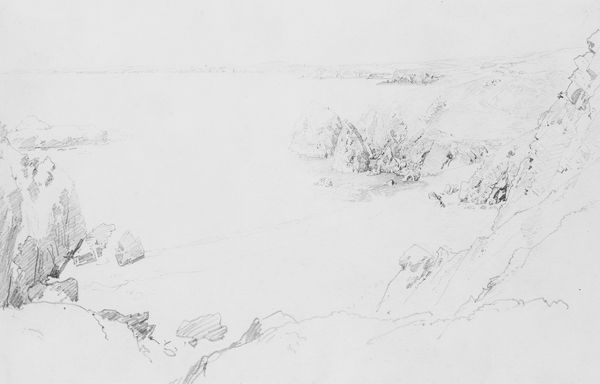
Dimensions: 20 1/2 × 30 1/2 in. (52.1 × 77.5 cm)
Copyright: Public Domain
Curator: This is Carl Gaertner’s “Lake Erie Shoreway,” completed in 1952, now residing here at the Metropolitan Museum of Art. He captured it en plein air, in oil. What are your initial thoughts? Editor: Bleak, yet evocative. The monochrome palette certainly emphasizes a feeling of isolation and austerity. There’s a sense of the environment's harshness bearing down, right? I wonder how class intersects here, since access to such landscapes varies wildly along socio-economic lines. Curator: It is compellingly stark. Beyond just the colors, I think that feeling is further highlighted through the use of specific imagery and archetypal forms. We have a small building, a very basic architectural unit almost as a token symbol for "shelter," or "the domestic." Then there is the overwhelming wild space that looms all around it. What feelings rise when those visual forms confront each other here? Editor: A potent representation of humanity's fraught relationship with nature. On the one hand, a sort of resilience in establishing even meager dwellings. But equally, there's nature's indifferent scale, threatening to erase those efforts at any moment. Considering that in 1952, post-war America was rapidly expanding, what could this image say about suburban growth impacting natural spaces? Curator: The cultural memory held by landscapes can definitely be powerful. The use of a stark, limited palette further refines this feeling. When an artist limits color, other formal elements such as texture, shape, and composition, become the focus, right? The surface quality becomes incredibly communicative. Notice the impasto brushstrokes in areas like the rocks. Editor: Yes, I am drawn to the textural elements. This visibly layered effect creates a tension that suggests instability but perhaps hope, too. And seeing figures dotting the landscape— who are they and what's their relationship to it? A family day out, a group whose labor defined the economy of the region... Curator: Exactly. What is clear to me is that it invites deep contemplation about memory and presence. Editor: Very true, the power dynamics at play deserve sustained thought. It layers the present moment onto a larger, critical understanding of history.
Comments
No comments
Be the first to comment and join the conversation on the ultimate creative platform.
